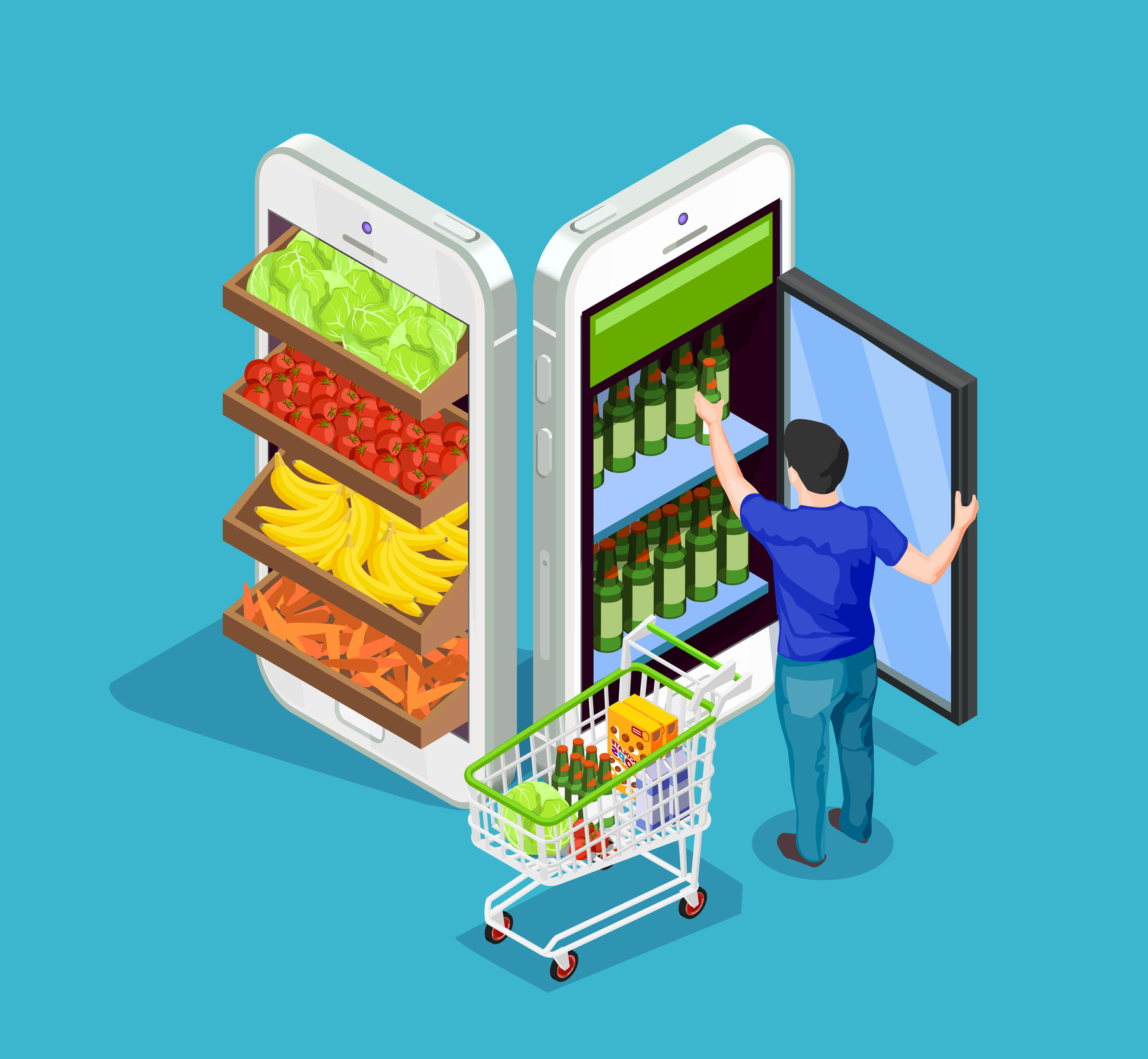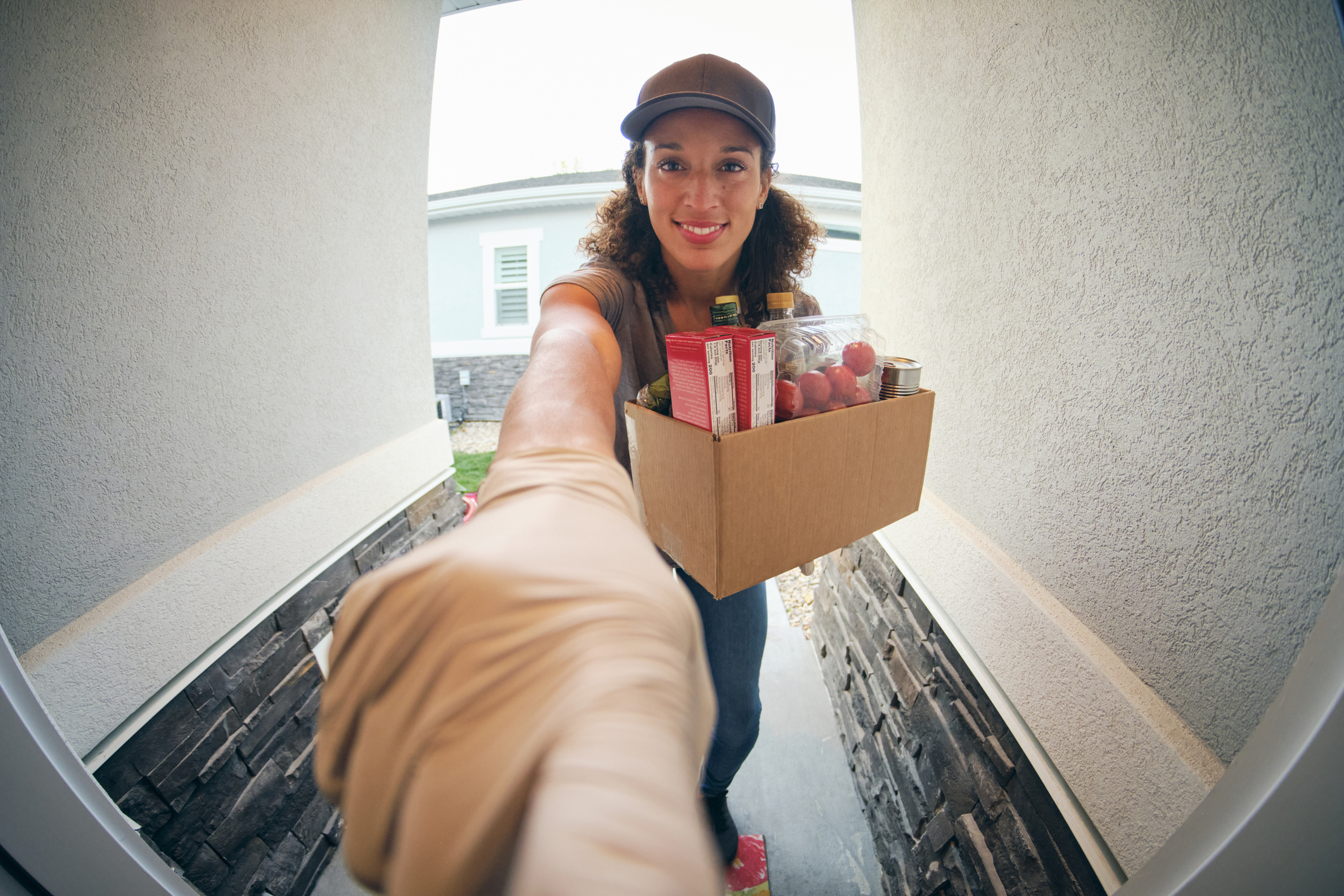What will the supermarket of the future look like?

The supermarket of 2050 could be home to problem-solving AI chatbots, hyper-personalised microbiota treatments and cultivation farms, according to this year’s Embassy of Food at Dutch Design Week.
The Embassy of Food is part of the annual Dutch Design Week, which takes place every October in Eindhoven. Supported by the World Design Embassies organisation, its aim is to leverage design and design thinking to tackle some of the world’s most pressing issues with a sense of creativity.
Technology related to online shopping and delivery has progressed significantly in recent years. According to 2022 lead curator Chloé Rutzerveld, this, added to consumers’ increasingly diverse dietary requirements, has put into question whether there will even be supermarkets in 30 years’ time.
To stay relevant within the hearts, minds and lives of consumers, supermarkets very well may need to evolve beyond simply offering food and household items. Exploring this challenge, this year’s Embassy of Food posed three scenarios, in which the supermarket of 2050 could play the role of health coach, living lab, and, perhaps most wild of all, a superbeing.
The supermarket as a health coach
In a future where the supermarket morphs into a health coach, the focus will be on hyper-personalised advice gathered from consumer data. Such data goes several steps beyond one’s favourite brands or preferred shopping days.
Merle Bergers, one of the designers to have developed an experiment exploring this scenario, suggests health advice given by the supermarket of 2050 could be based on data derived from bodily samples. In particular, this data could be instrumental in helping customers take better care of their gut microbiome through personalised nutrition.
It is widely accepted that good gut health has a range of benefits, from lifted moods and higher energy levels, to a well-functioning digestive system – as a result, experts now call it the ‘second brain’. Bergers’s Microbiota To Go concept suggests that supermarkets could offer rapid DNA sequencing hubs which could provide customers with a map of their gut, and then use this information to provide personalised means of improving it.
Advice on how to improve gut health could be as simple as pointing consumers towards gut-friendly foods. In Bergers’s most high-tech vision of the future, consumers could go to the supermarket for regular gut boosts, delivered through a probiotic mist absorbed by the skin – a technology currently being explored in the gut microbiology department of Maastricht University. This mist could be tailored to an individual’s gut needs.
The idea, Bergers says, is that people could develop a new ritual involving their local supermarket, in the same way they might once a week buy coffee from a café.

Rhodomonas salina algae displayed in crab claw-like shells

L-R Dunalleila salina, Rhodomonas salina and Tetraselmis chui algaes. Images courtesy of Paul Cochrane
Left: Rhodomonas salina algae displayed in crab claw-like shells
Right: L-R Dunalleila salina, Rhodomonas salina and Tetraselmis chui algaes. Images courtesy of Paul Cochrane
The supermarket as a living lab
Envisaging a future where the supermarket becomes a living lab is a response to the rapidly evolving foodtech scene. Humans have always had a degree of interest in how food is made, but technologies like cell cultivation and fermentation push the limits of laypeople’s understanding.
Malu Lücking, the biodesigner behind one of the projects in this scenario, suggests the supermarket of 2050 could be a place where the curtain surrounding these technologies is lifted. Her Landless Food concept is focused on making meat and fish analogues using three types of algae commonly found in rivers around the world.
Lücking cultivates the strains on differently shaped gel solutions before housing them in shells which mimic the food product she is trying to recreate. Rhodomonas salina, for example, is an algae which has a similar taste to crab meat. To mimic this, Lücking’s places the cultivated algae shapes inside shells reminiscent of crab claws. Meanwhile Dunalleila salina has a distinct floral taste, which she associates with similarly flowering produce like artichokes. The shell she uses here is similar to a seed pod.
She believes by presenting these foods in a manner that mimics animal derived products, such as crab claws or vegetables, consumers will be more inclined to try the algae-based foods and potentially adopt them into their diet long-term. This could be of considerable benefit for the environment, because harvesting algae has just a fraction of the impact on natural resources that traditional animal agriculture does.
The supermarket as a superbeing
The supermarket of 2050 scenario which pushes the limits the most is the one which envisions it as a superbeing. In this projection, the bricks-and-mortar supermarket becomes a kind of AI problem solver which blurs the lines between the human and non-human.
Nonhuman Nonsense, the design studio behind the project at the centre of this scenario, have used two AI bots to develop AI-bert’s Fresh Place – a playful take on Albert Heijn, the Netherlands’ largest supermarket chain. This virtual experience is powered by an AI chatbot.
The team has trained the bot to converse with consumers and help them identify their specific worries concerning the environment, as well as get a sense of their favourite foods or products. It then produces a product recommendation based on those concerns.
In its infancy right now, the bot can produce some relatively wild recommendations like Oreo celery, and a vegan dairy replacement called Compassion Cheese. But as the designers explain, the technology has huge potential, particularly for personalised and climate-conscious nutrition.
If consumers were able to train their own AI-berts to remember their eating habits and dietary requirements, grocery shopping could become even smarter than it is now. People with diabetes, for example, could teach the AI to only recommend suitable foods, while new parents could very quickly be able to explore baby-related nutrition.

Visitors interacting with the Microbiota project at Supermarket of 2050. Picture courtesy of Max Kneefel and World Design Embassies

Examples of the kind of information consumers of the future might be able to get from their local supermarket. Picture courtesy of Max Kneefel and World Design Embassies
Left: Visitors interacting with the Microbiota project at Supermarket of 2050. Picture courtesy of Max Kneefel and World Design Embassies
Right: Examples of the kind of information consumers of the future might be able to get from their local supermarket. Picture courtesy of Max Kneefel and World Design Embassies
Will we really see these supermarket ideas in 2050?
As the Embassy of Food explains, the purpose of these design experiments isn’t to “offer immediate answers, but take you through a world of possible future scenarios”. While you are not likely to find your local supermarket replaced with an AI chatbot anytime soon, the intention is to test the limits of how far the relationship between consumer and shop can be augmented.
“The supermarket is a fascinating place; where people from all corners of society come together, where new products are introduced, and where people experiment with packaging materials, influencing purchasing behaviour and methods for reducing food waste,” the Embassy of Food explains.
For these reasons, experimenting with ideas which we might find outlandish in 2022 is a useful task for the future.








